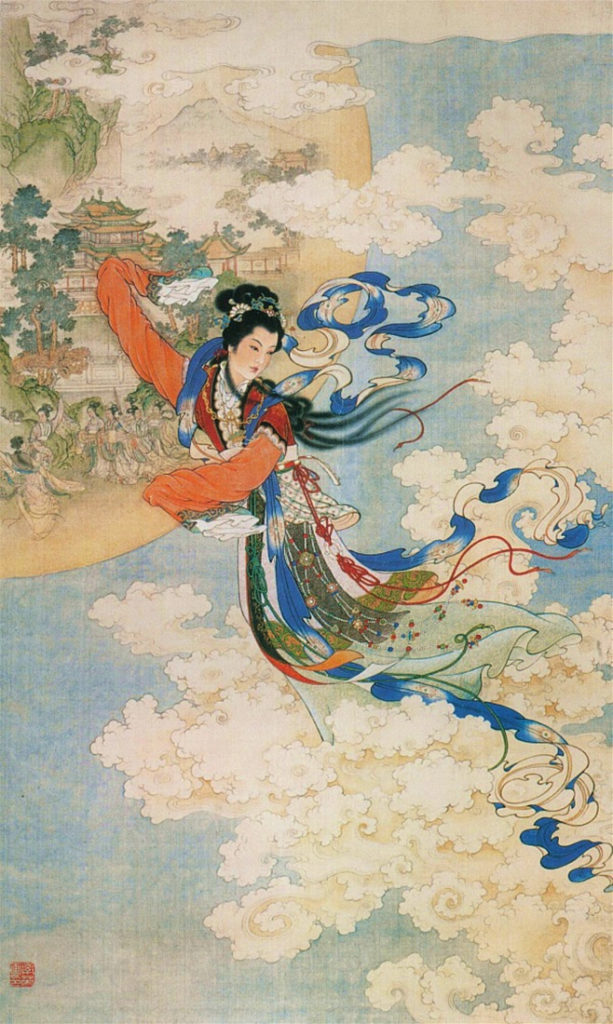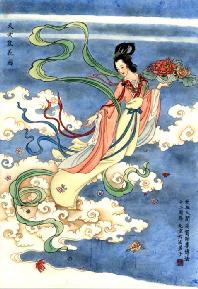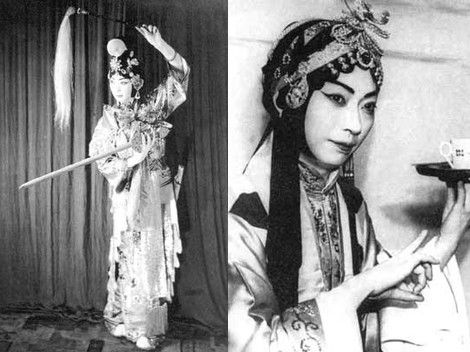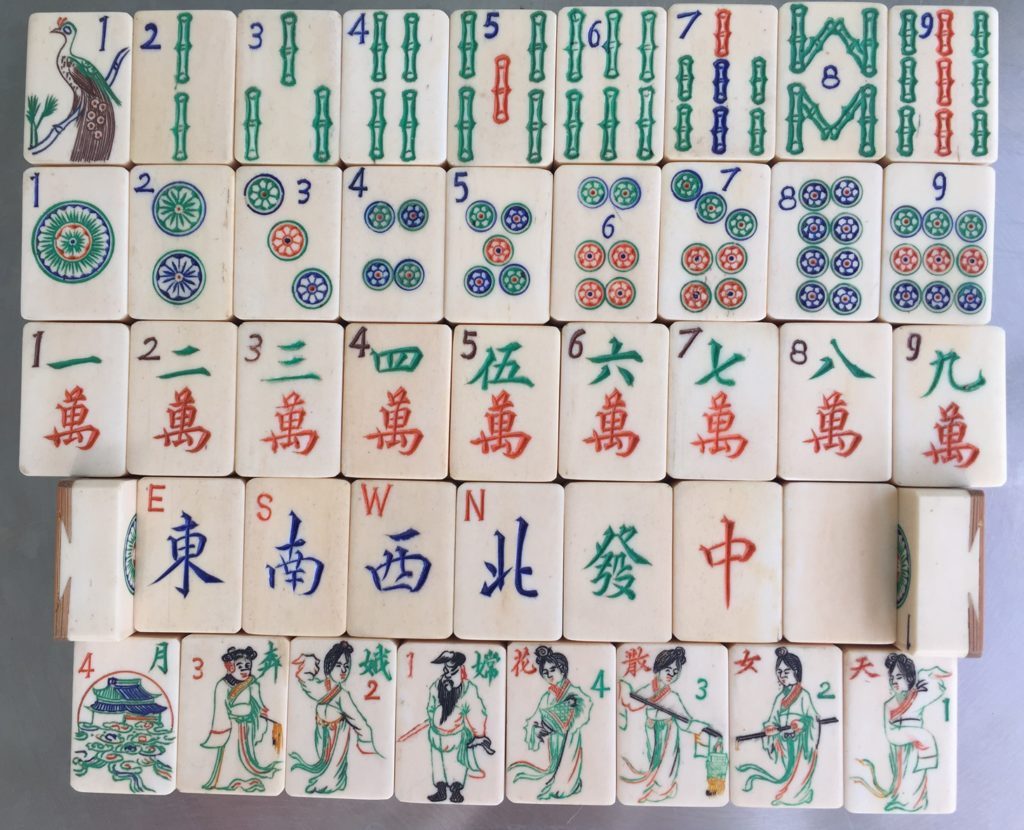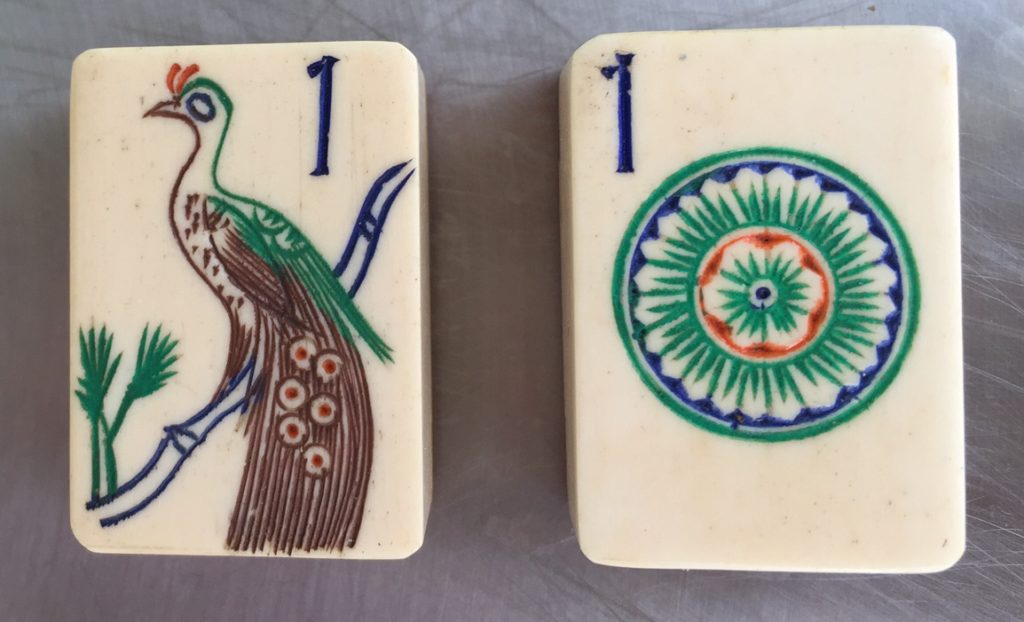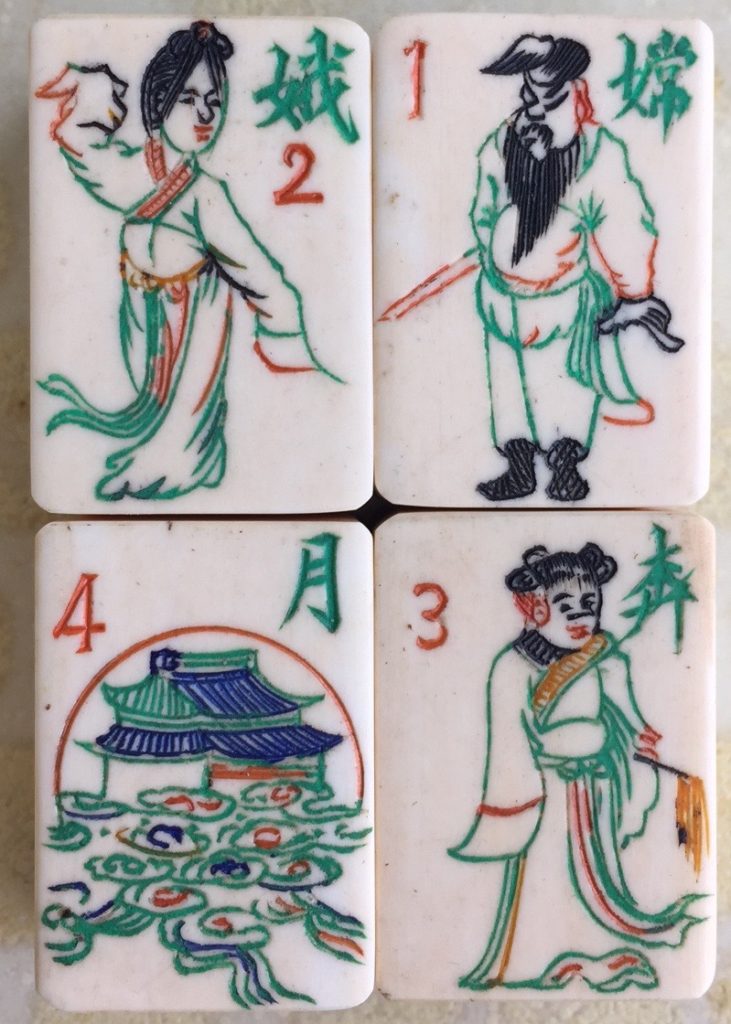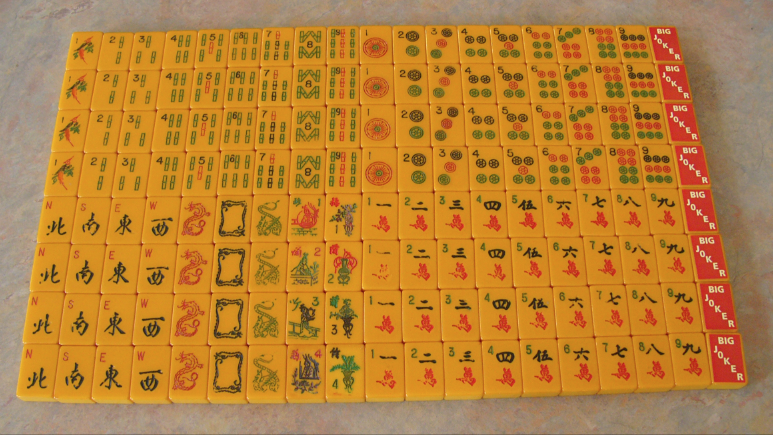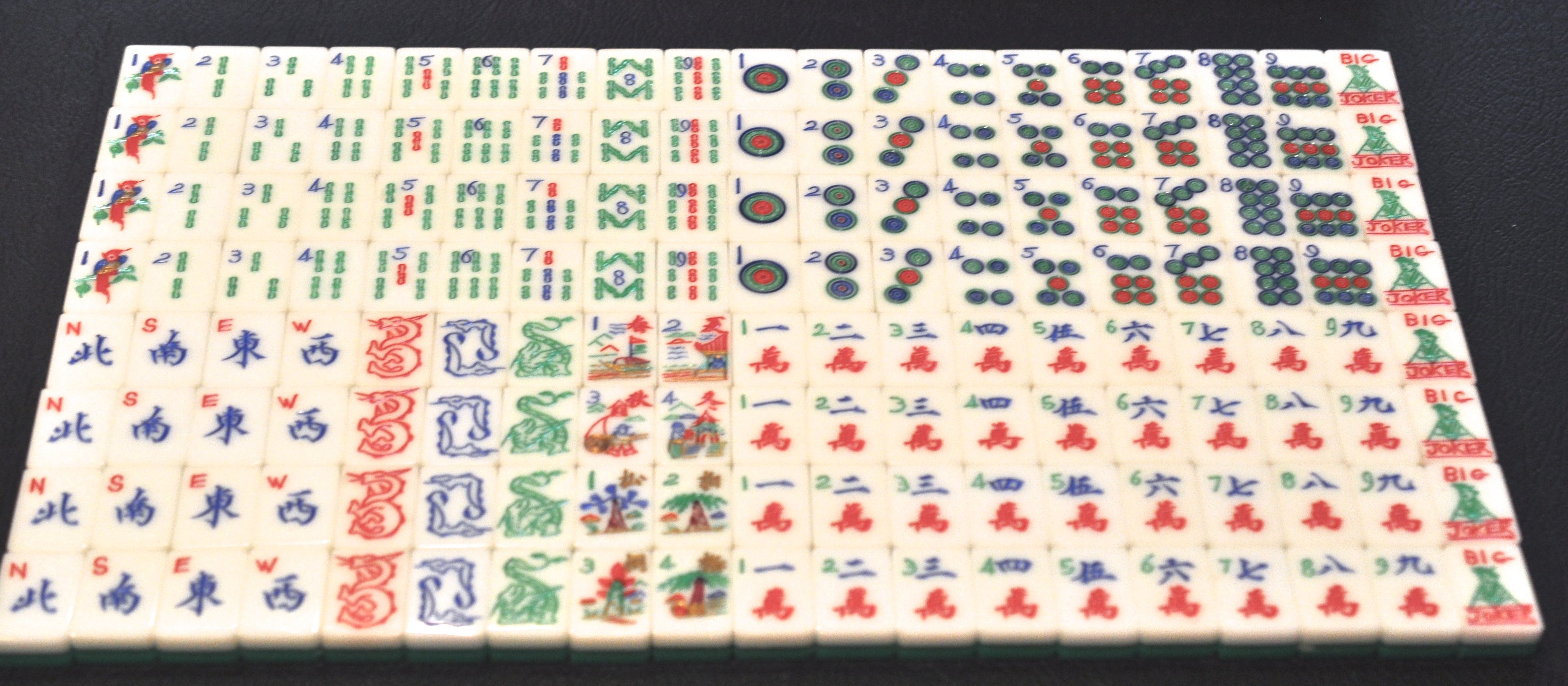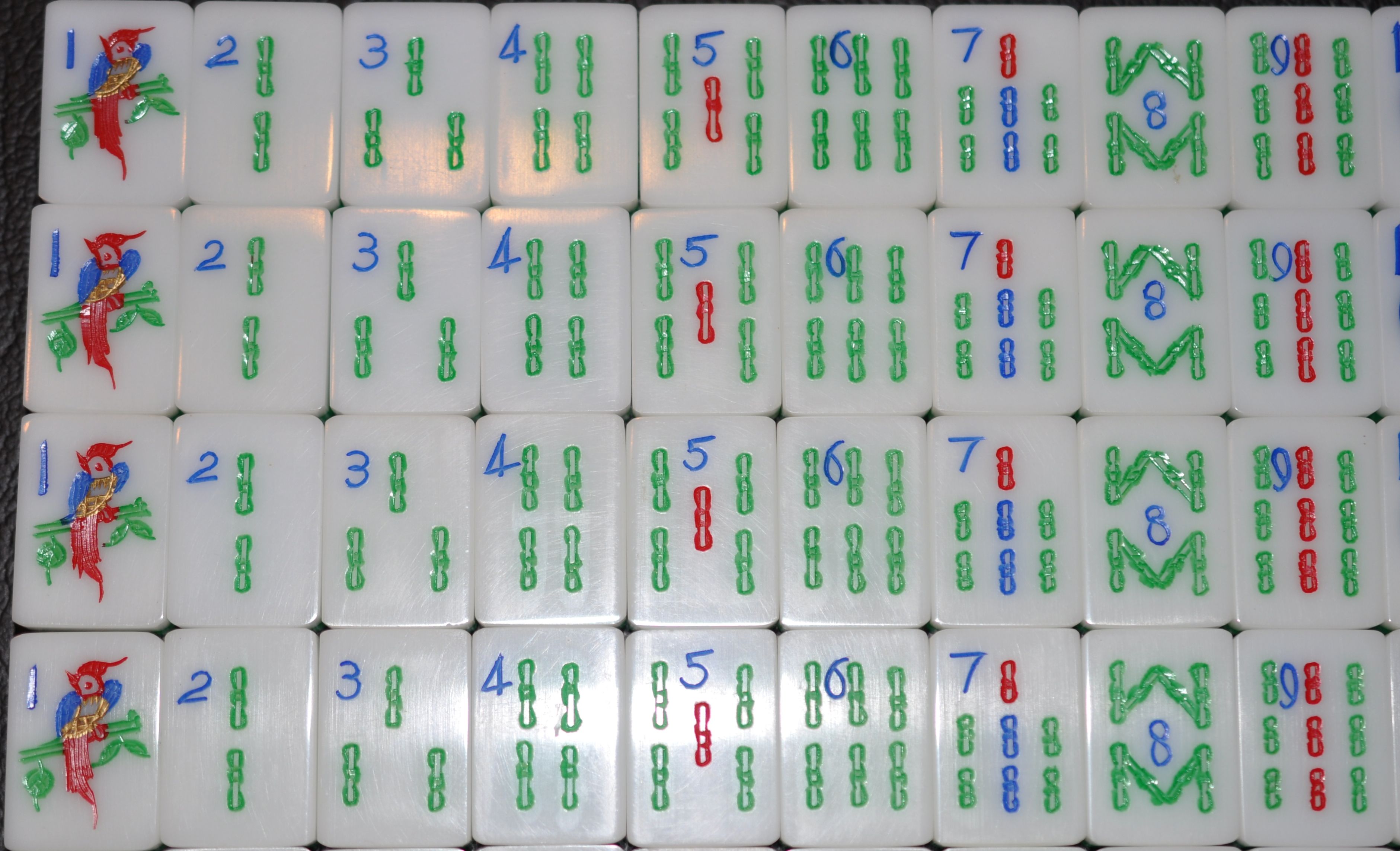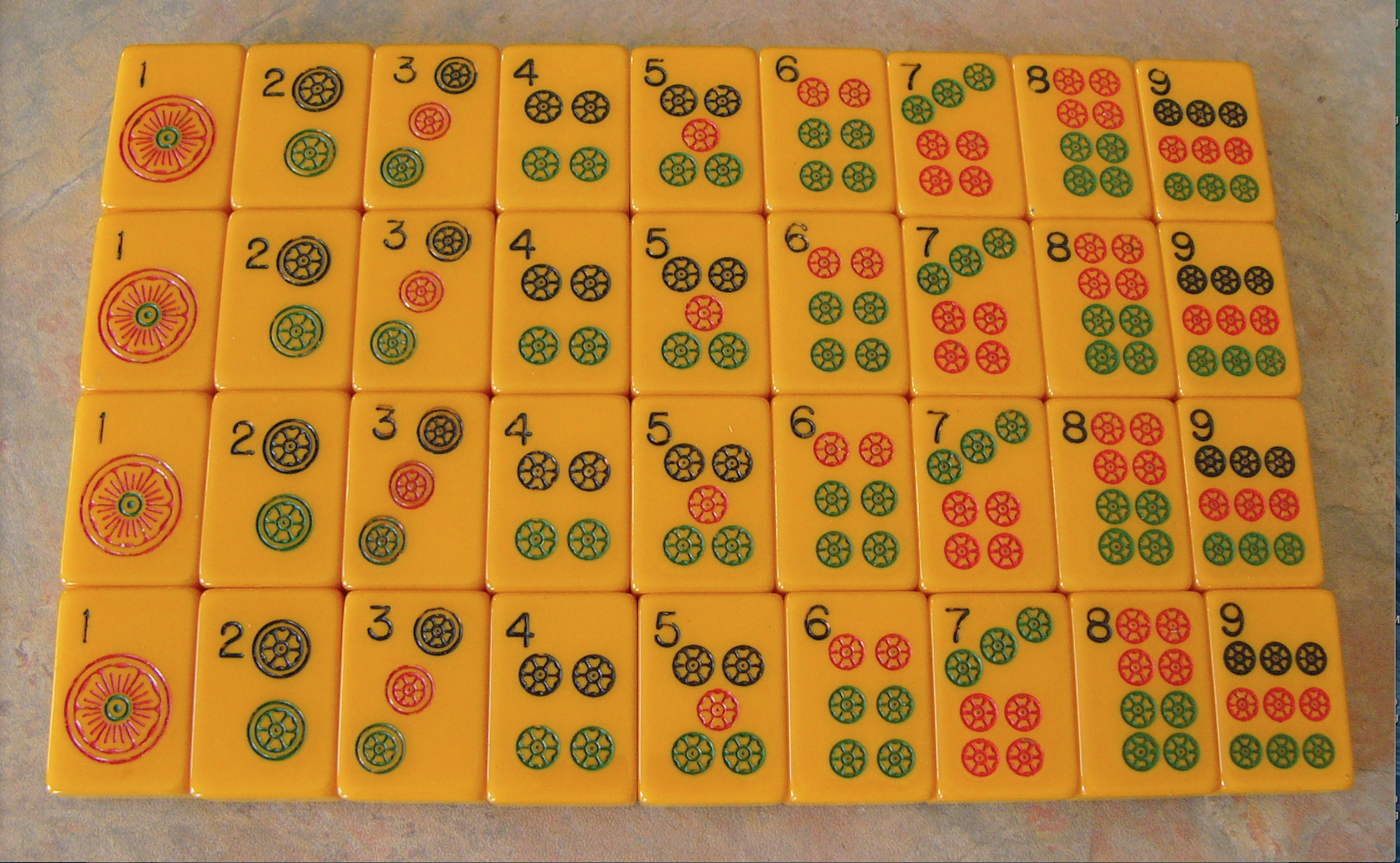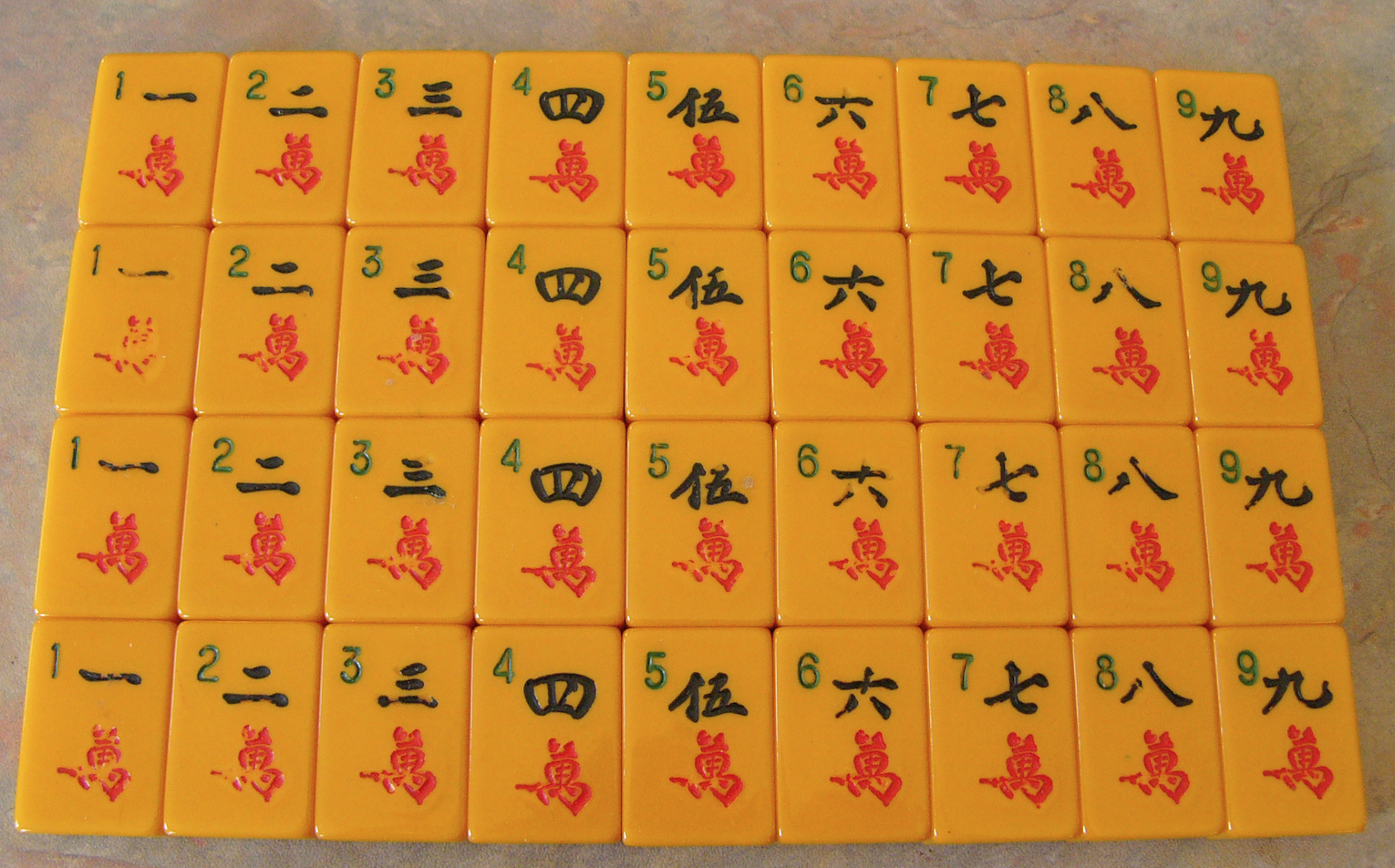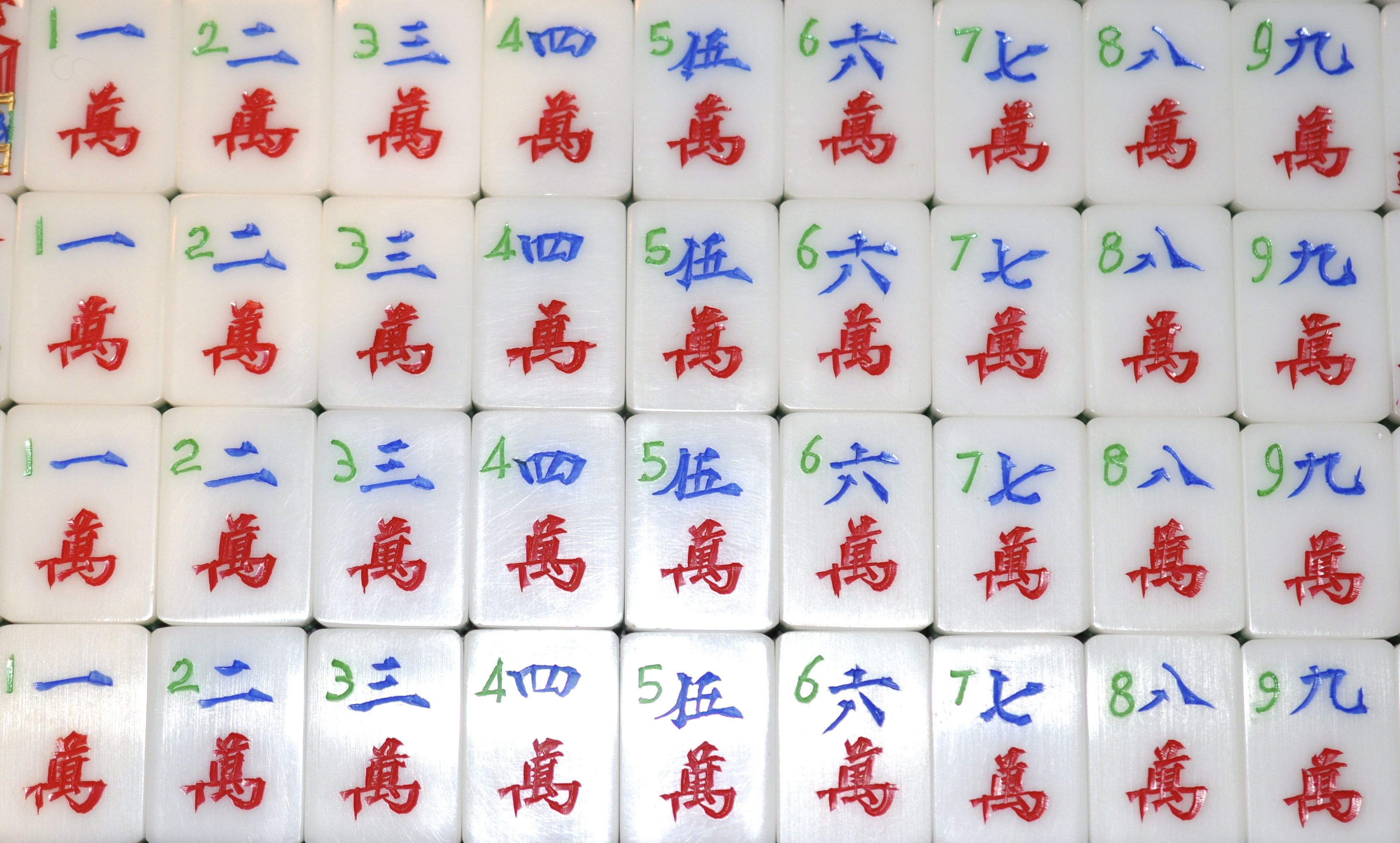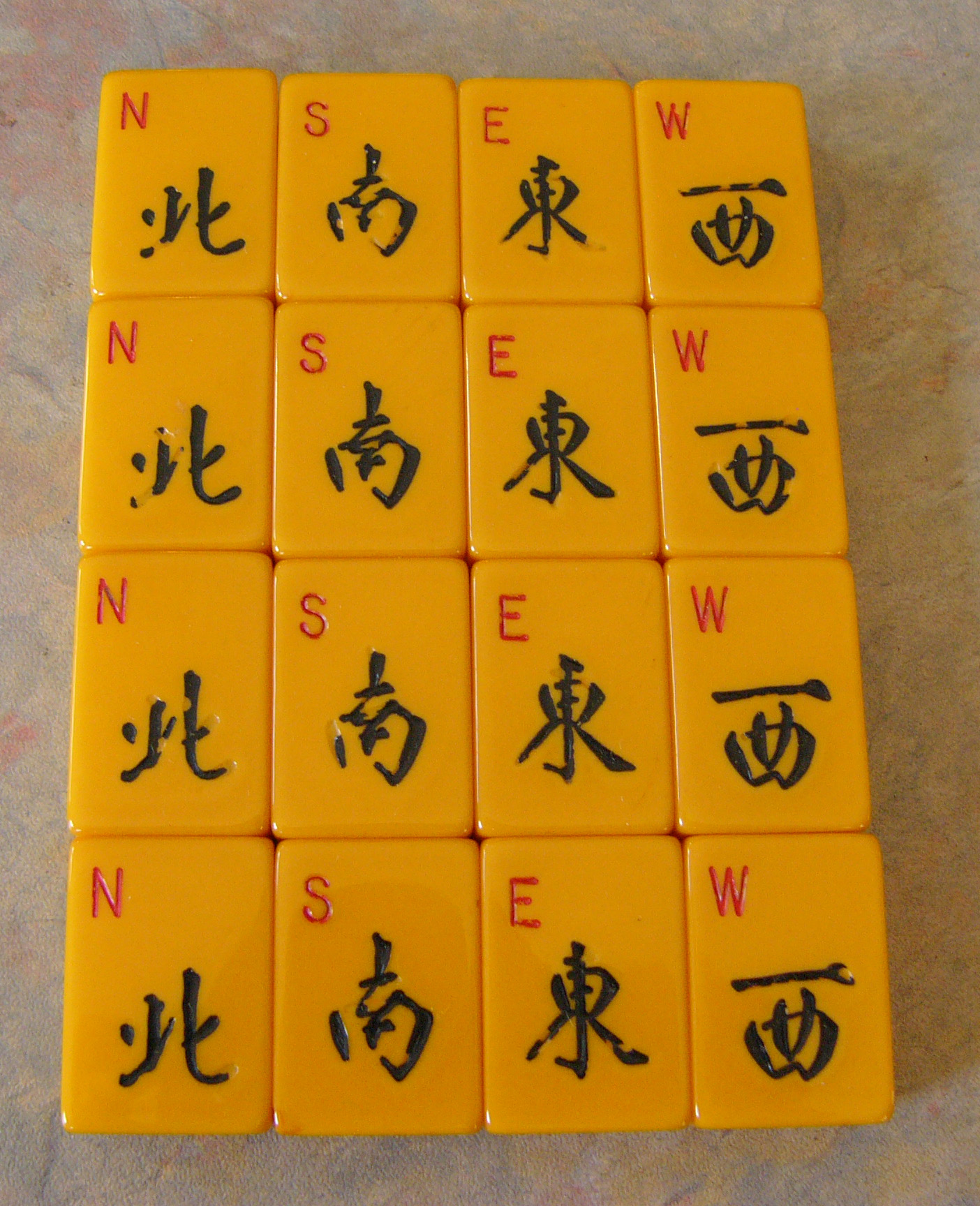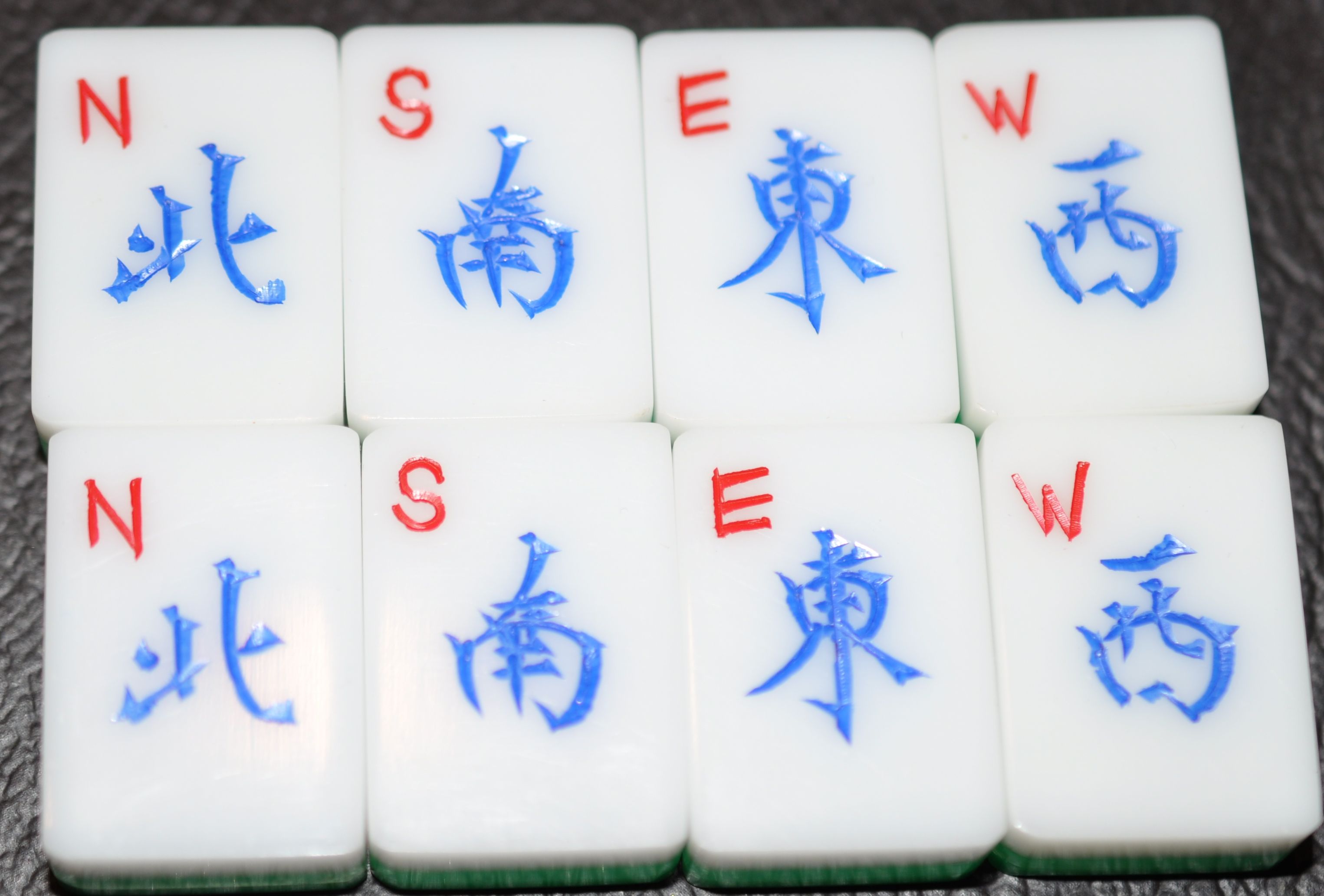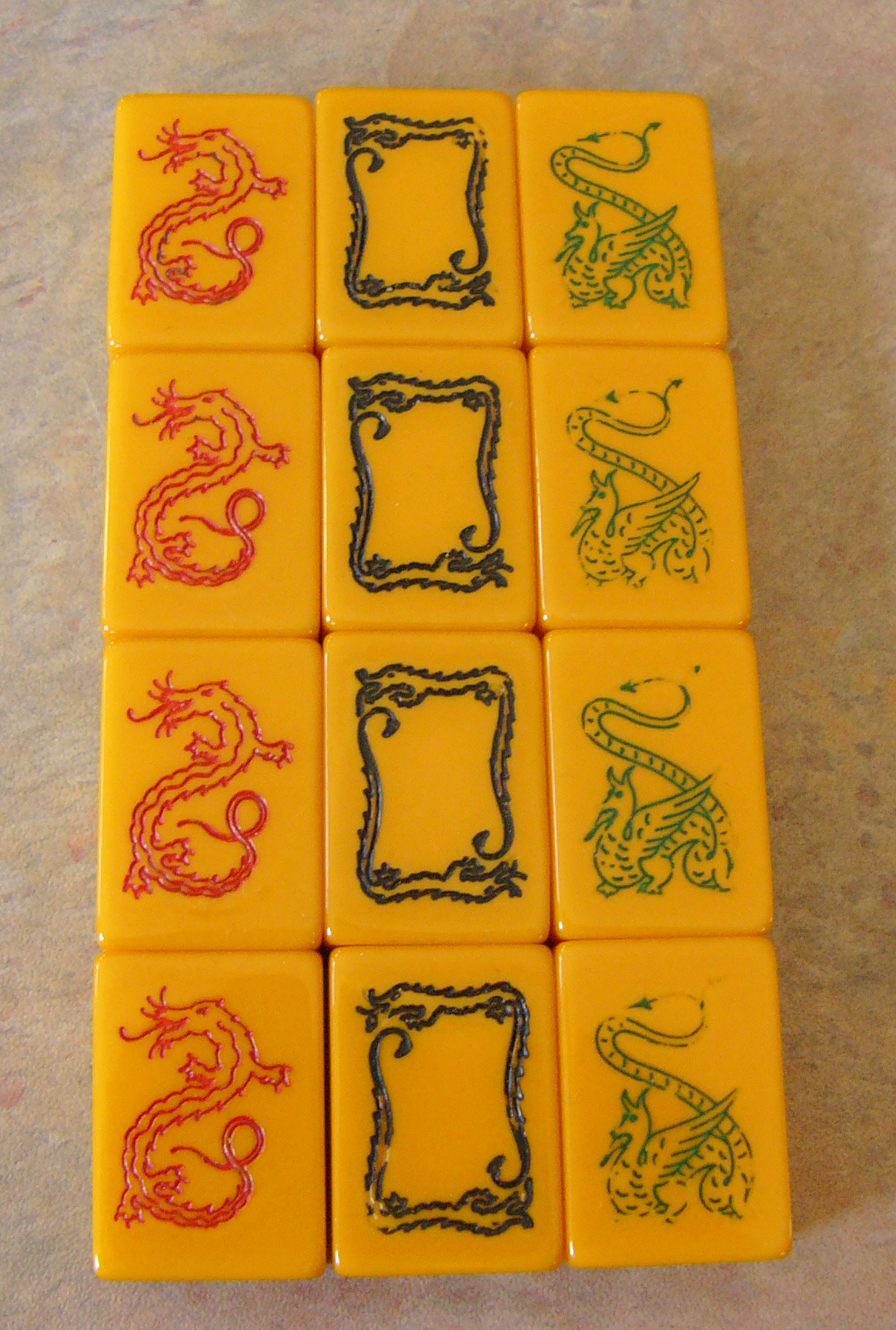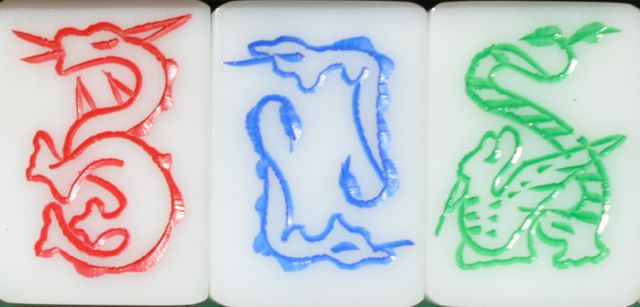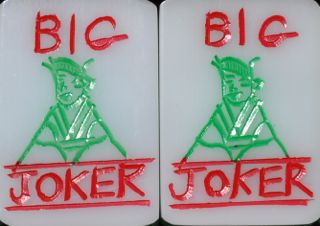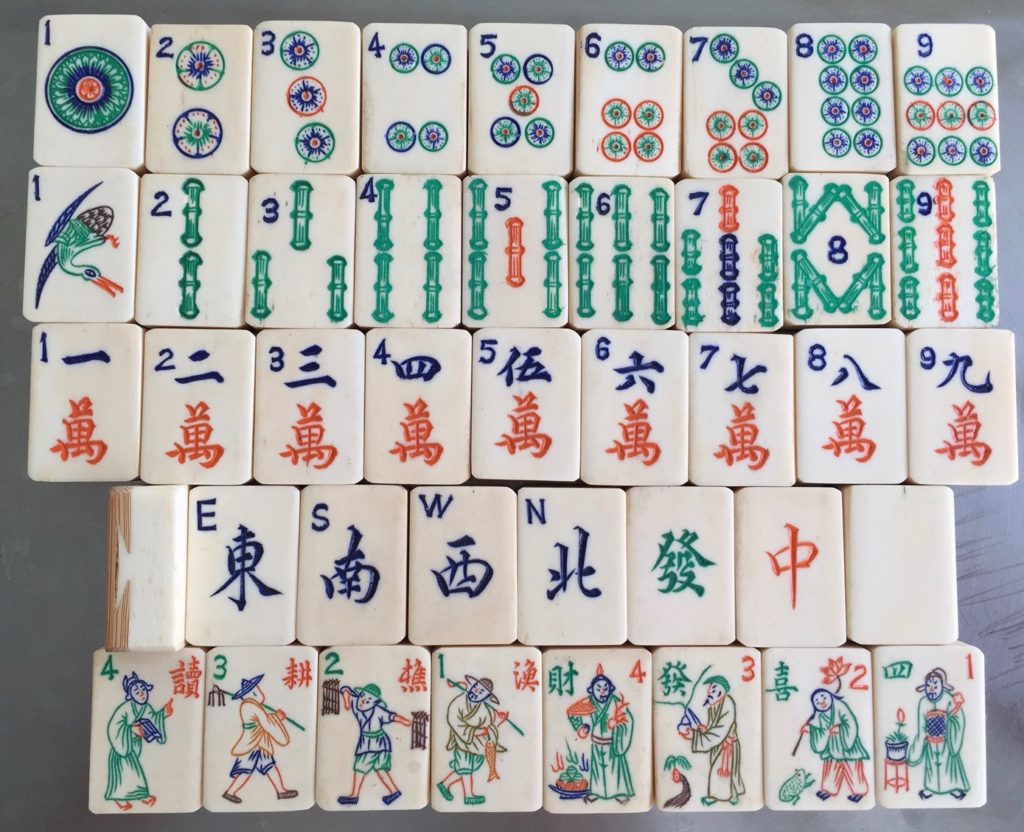
NEWS: This is the first real bone and bamboo set ever to be part of a mahjong solitaire game! Redstone Games has introduced this tile set to their other already existing selections. How exciting is this!! The download info is at the end of this post.
I found this set in Salem, New York at McCartee's Barn. I have a habit of walking into stores and opening every box that could possibly hold mahjong tiles; I finally got lucky! The carving and the colors are just divine. The tiles are in fabulous shape too, and look how thick the bone is. This must have been the work of a very skilled carver, because only the best craftsmen were allowed to work on sets with the thickest bone, which sold for a lot of money. This set has Arabic numbers and Western letters, so we know it was made for the export market.
The Crane One Bam is lovely, as are the other round end Bams. The Dots are delightful, certainly starting with that delicate Two Dot with plum blossom center, a theme continued through the 9 Dots. The presence of those little details on each flower petal adds to the charm, as do those orange outlines.
The Craks, Winds and Dragons are what we are used to seeing with these old Bone and Bamboo sets. But, once again, we have stunning and unusual Flowers.
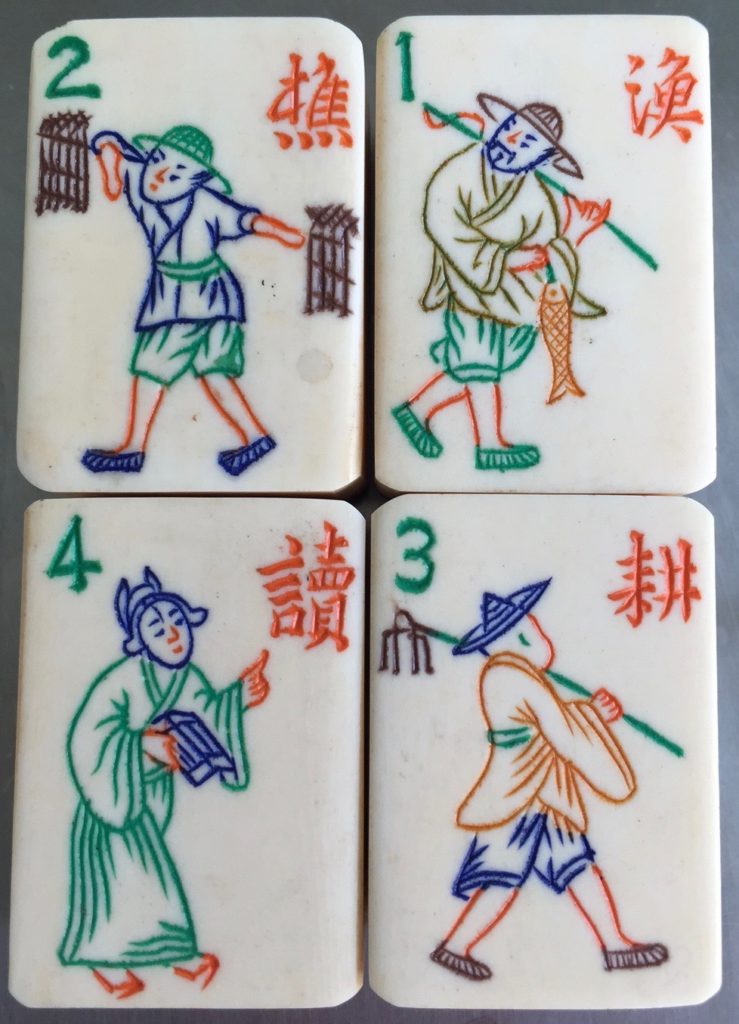
These tiles are a fabulous visual interpretation of the four noble callings that existed in Chinese society for hundreds of years. Each man is caught in a moment of activity, of motion, almost like a snapshot. #1 is the fisherman, lucky with his rather large catch. He's sporting a mustache and goatee, and he's wearing a wrap-around shirt, shorts and some kind of soft shoe, like two of the other men. He's carrying his fishing pole over his shoulder. #2 shows us the wood-gatherer, walking instead of sitting and smoking as we often see him. #3 is the farmer, with his hoe over the shoulder. I love that his face is turned away from us, adding to the idea that the carver has captured a brief moment in time. And #4 is the scholar, wearing a robe, a different type of hat, and what are probably wooden shoes. Amazing, right, how many details can be fit into such tiny surfaces?
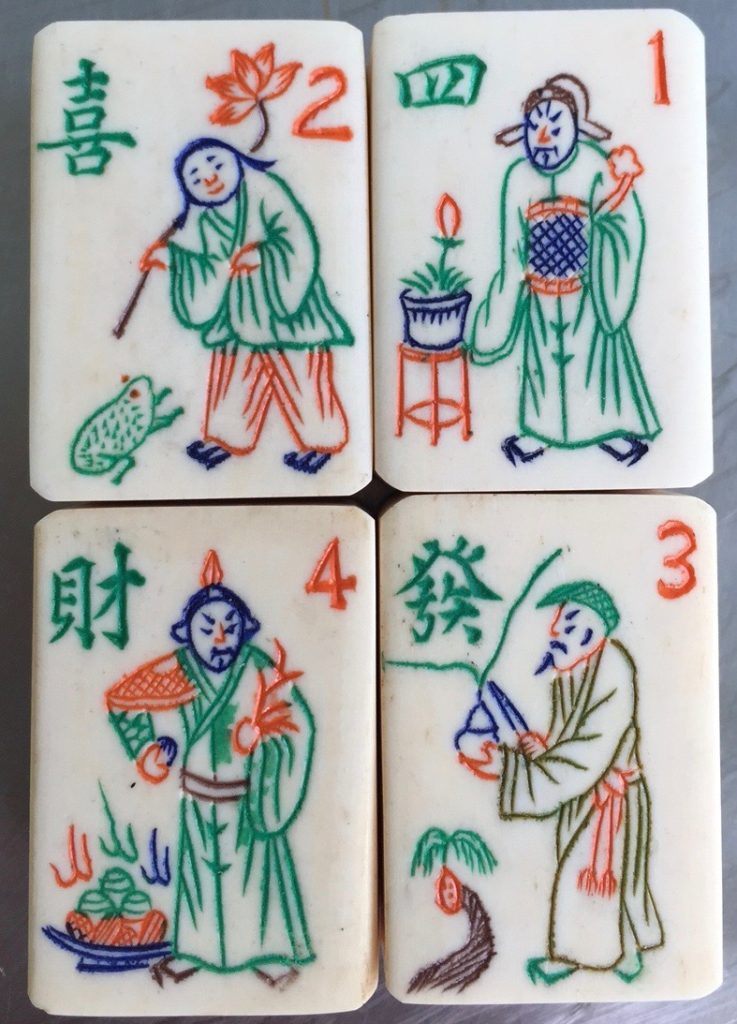
There are some familiar images on the tiles. The three men, on tiles 1,3 and 4, are all wearing robes and sporting the mustache and goatee look we saw on the other set; only the boy, on #2 does not. #1 shows us a man holding a ruyi scepter, a talisman which symbolizes power and good fortune. This idea of good fortune ties in with some of the messages of these tiles, as you will see. #2 is Liu Hai and the three legged toad, a story that we often see on mahjong tiles. Normally we see him with a rope with coins, but here he has a flower. From Primal Trek:
Liu Hai was a Minister of State during the 10th century in China. He was also a Taoist practitioner. One version of the story says that he became good friends with a three-legged toad who had the fabulous ability to whisk its owner to any destination.¹ This particular toad had a love not only for water but also for gold. If the toad happened to escape down a well, Liu Hai could make him come out by means of a line baited with gold coins.
The second version of the story is that the toad actually lived in a deep pool and exuded a poisonous vapor which harmed the people. Liu Hai is said to have hooked this ugly and venous creature with gold coins and then destroyed it.
#3 shows the Chinese character (word) we often see: Fa, the Green Dragon on many sets, meaning prosperity. In the photo with all the tiles, at the top, you can see the set's Green Dragon directly above #3. Tile #4 shows a man about to place a piece of coral in a treasure pot. For the Chinese, coral had a special significance: From Primaltrek:
|
Coral (shanhu 珊瑚) is included as one of the Eight Treasures and symbolizes longevity and official promotion.
As a symbol of longevity, the Chinese have traditionally believed that coral represents an "iron tree" (tieshu 铁树) that grew under the sea and blossomed only once every hundred years.
Red coral is considered particularly auspicious because the Chinese believe the color red signifies good luck, good fortune, and happiness.
Coral resembles deer antlers and deer are symbols of longevity.
Coral is also a symbol of official promotion because a coral button on the hat identified one of the nine grades of government officials.
|
Once again, thanks to Ray Heaton, we have a translation for these tiles:
The phrase is 四喜發財, and isn't that easy to translate. In pinyin it is Si Xi Fa Cai. Fa Cai is easy enough, "Get Rich" (and it's the Fa character seen frequently, 發, as the Green Dragon), but the first two are more challenging, not helped by how the full phrase is used today. Nowadays it appears that the most common meaning relates to food, used as the name for a dish of four meatballs! If we split the phrase up into two pairs then we find them used in mahjong...Si Xi, is used in Hong Kong Mahjong rules in the scoring hands "Four Small Blessings" and "Four Large Blessings" and of course we have, Fa Cai, in Hong Kong rules this means a meld of three Green Dragons.
Si Xi is also used to describe the folk art model "the four happinesses baby figurine"; also called Si Xi Wa Wa, see here, http://english.visitbeijing.com.cn/culture/n215174241.html. (If you click on that link you will recognize this figure.)
But looking back, using a dictionary that covers historical uses of phrases, we find Si Xi referring to those things that will cause one joy (and so its use in Hong Kong mahjong rules fits well - four blessings). These are explained too in the description of the four happinesses baby; “The four great happy moments in life are to enjoy one’s wedding night, to succeed in an imperial exam, to have a welcome rain after a long drought, and to come across an old friend in a distant land."
I expect the phrase was used as a new year expression, wishing you wealth and happiness throughout the year (pretty much as 恭喜發財 is now, which differs in only its first character..."may you have a happy and prosperous new year", Gong Xi Fa Cai).
It is always so interesting to see how the images do not necessarily correlate with the Characters on the tiles, giving us all a lot to see and think about.
Click below to download the Mahjong solitaire app:
Mahjong Solitaire Redstone (iOS): https://itunes.apple.com/app/apple-store/id880605393?pt=48597800&ct=GreggPress&mt=8
Mahjong Solitaire Redstone (Android): https://play.google.com/store/apps/details?id=mobi.redstonegames.redstonemahjong
I just co-wrote a book with Susan West. It's the first book ever to identify vintage mahjong sets and allow the reader to determine the set's relative value: Mahjong is For the Birds. To see more about this, click here
